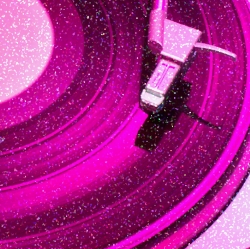To dither means to add noise to our audio signal. Yes, we add noise on purpose, and it is a good thing.
How can adding noise be a good thing??!!!
We add noise to make a trade. We trade a little low-level hiss for a big reduction in distortion. It’s a good trade, and one that our ears like.
The Problem
The problem results from something Nyquist didn’t mention about a real-world implementation—the shortcoming of using a fixed number of bits (16, for instance) to accurately represent our sample points. The technical term for this is “finite wordlength effects”.
At first blush, 16 bits sounds pretty good—96 dB dynamic range, we’re told. And it is pretty good—if you use all of it all of the time. We can’t. We don’t listen to full-amplitude (“full code”) sine waves, for instance. If you adjust the recording to allow for peaks that hit the full sixteen bits, that means much of the music is recorded at a much lower volume—using fewer bits.
In fact, if you think about the quietest sine wave you can play back this way, you’ll realize it’s one bit in amplitude—and therefore plays back as a square wave. Yikes! Talk about distortion. It’s easy to see that the lower the signal levels, the higher the relative distortion. Equally disturbing, components smaller than the level of one bit simply won’t be recorded at all.
This is where dither comes in. If we add a little noise to the recording process… well, first, an analogy…
An Analogy
Try this experiment yourself, right now. Spread your fingers and hold them up a few inches in front of one eye, and close the other. Try to read this text. Your fingers will certainly block portions of the text (the smaller the text, the more you’ll be missing), making reading difficult.
Wag your hand back and forth (to and fro!) quickly. You’ll be able to read all of the text easily. You’ll see the blur of your hand in front of the text, but definitely an improvement over what we had before.
The blur is analogous to the noise we add in dithering. We trade off a little added noise for a much better picture of what’s underneath.
Back To Audio
For audio, dithering is done by adding noise of a level less than the least-significant bit before rounding to 16 bits. The added noise has the effect of spreading the many short-term errors across the audio spectrum as broadband noise. We can make small improvements to this dithering algorithm (such as shaping the noise to areas where it’s less objectionable), but the process remains simply one of adding the minimal amount of noise necessary to do the job.
An Added Bonus
Besides reducing the distortion of the low-level components, dither lets us hear components below the level of our least-significant bit!
How? By jiggling a signal that’s not large enough to cause a bit transition on its own, the added noise pushes it over the transition point for an amount statistically proportional to its actual amplitude level.
Our ears and brain, skilled at separating such a signal from the background noise, does the rest. Just as we can follow a conversation in a much louder room, we can pull the weak signal out of the noise.
Going back to our hand-waving analogy, you can demonstrate this principle for yourself. View a large text character (or an object around you), and view it by looking through a gap between your fingers. Close the gap so that you can see only a portion of the character in any one position. Now jiggle your hand back and forth. Even though you can’t see the entire character at any one instant, your brain will average and assemble the different views to put the characters together. It may look fuzzy, but you can easily discern it.
















